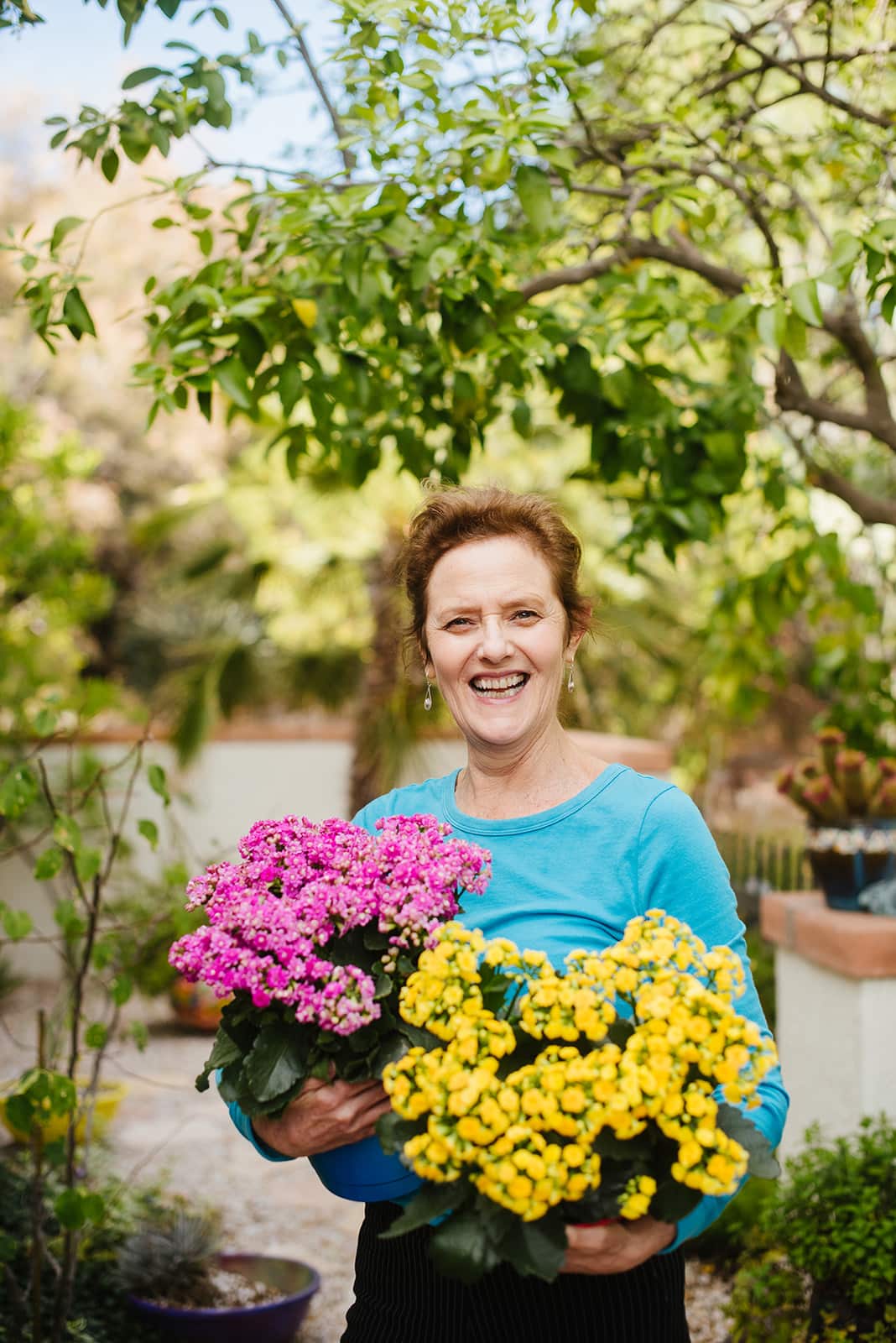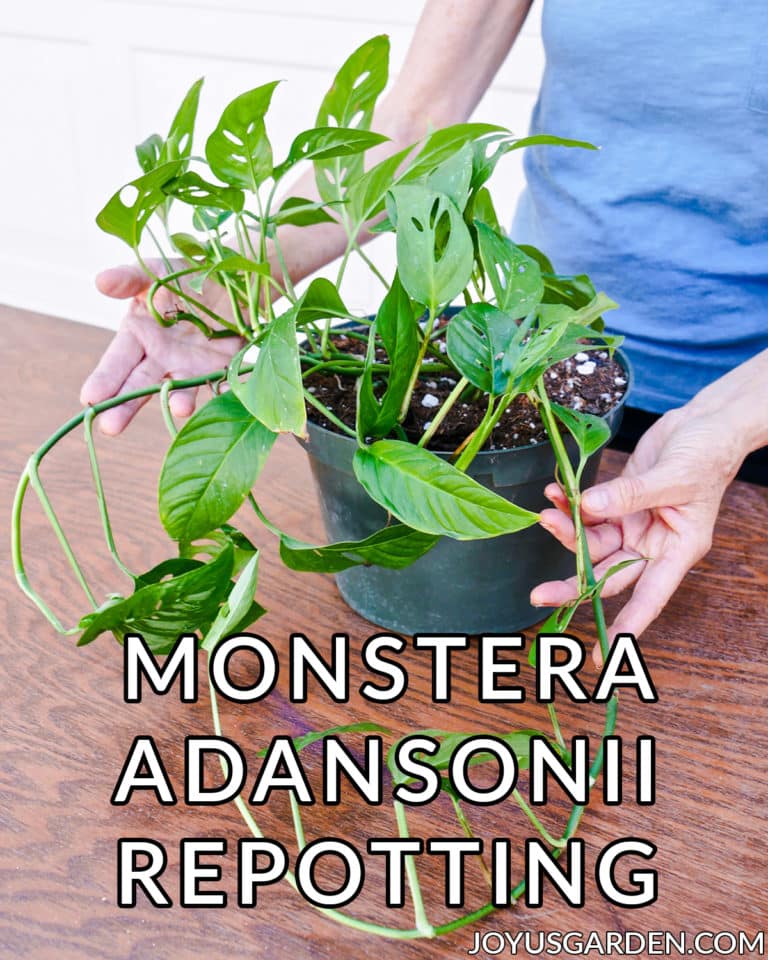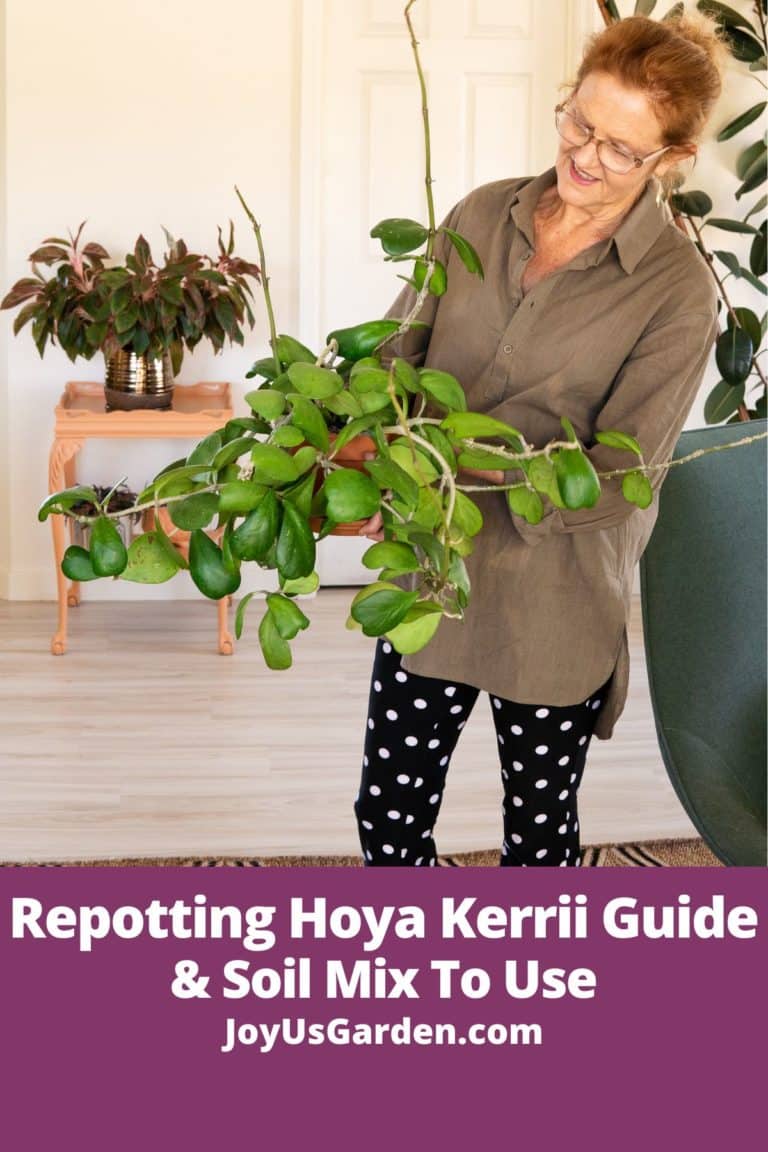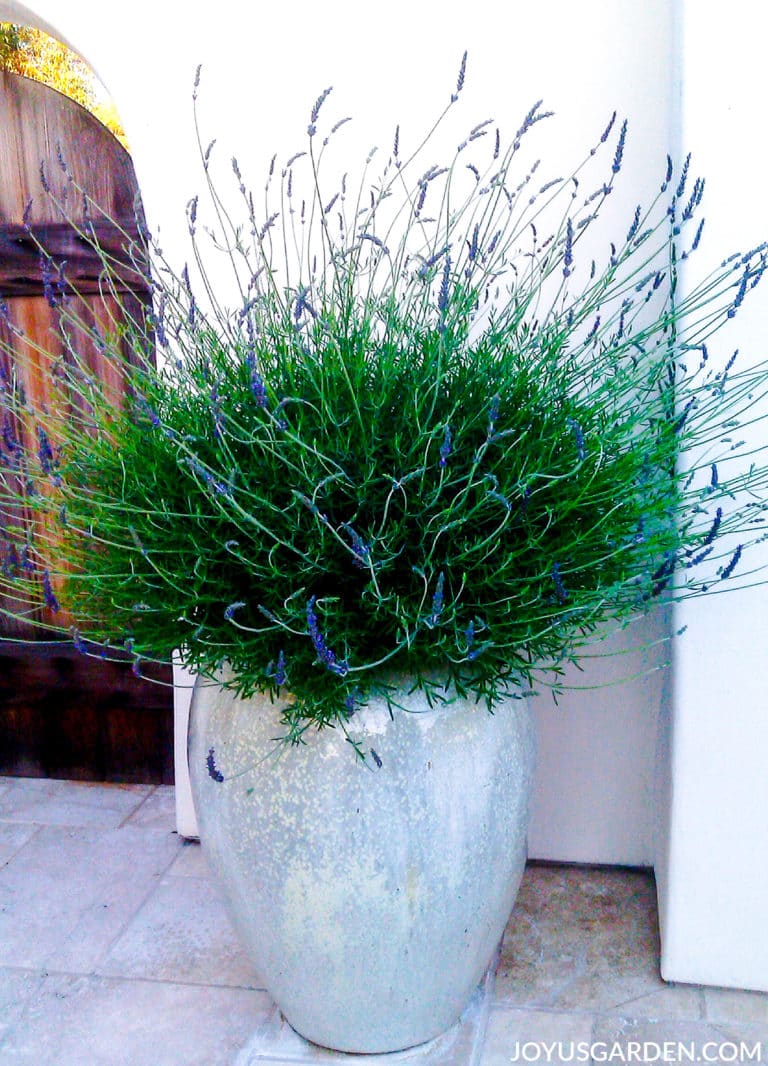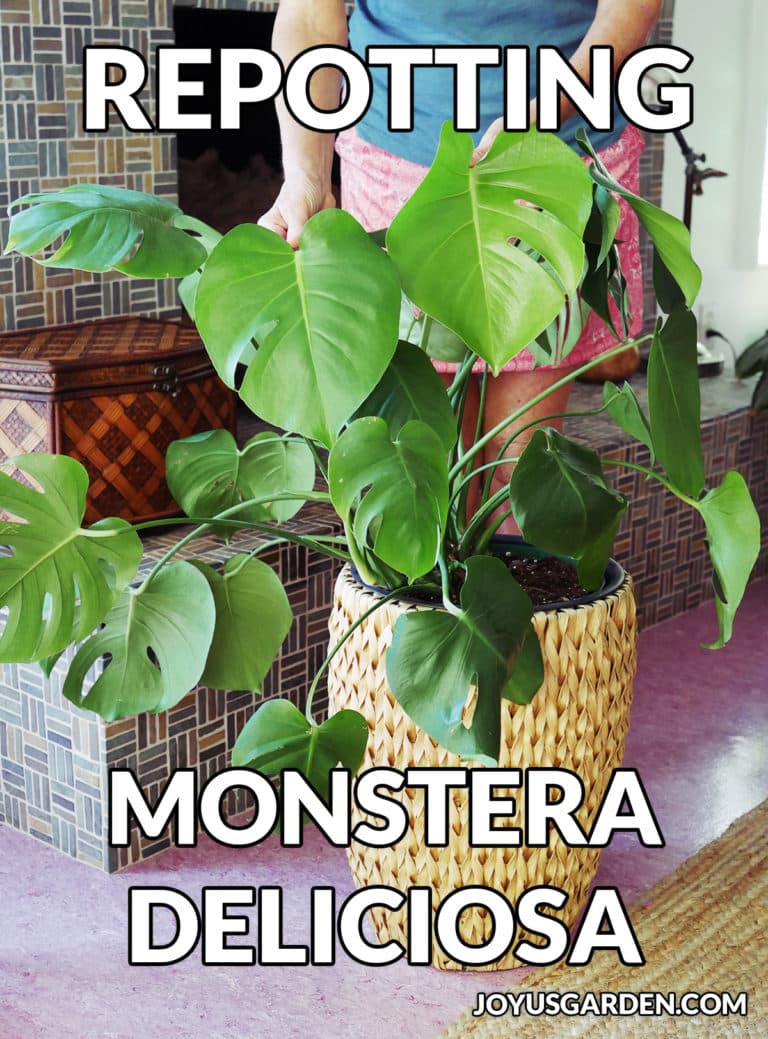Repotting Lucky Bamboo Plants: A Step By Step Guide
So, you’ve got a Lucky Bamboo plant? Over time, yours may outgrow its old pot because the roots have become too cramped. That’s perfectly normal and a sign that it’s time for a change. Repotting a Lucky Bamboo isn’t difficult. In fact, with the right tools and steps, it can be quick and simple.
Lucky Bamboo is typically sold growing in water, but in its native environment of subtropical Africa, it grows in the ground. I’ve always grown it in water, but I spotted a Lucky Bamboo in a 4″ pot at one of the local nurseries last year and decided to give it a try. It’s doing great!
Botanic name: Dracaena sanderiana Common name: Lucky Bamboo, Ribbon Plant, Chinese Water Bamboo
This post may contain affiliate links, you can read our policies here.
A Guide on How to Repot Lucky Bamboo
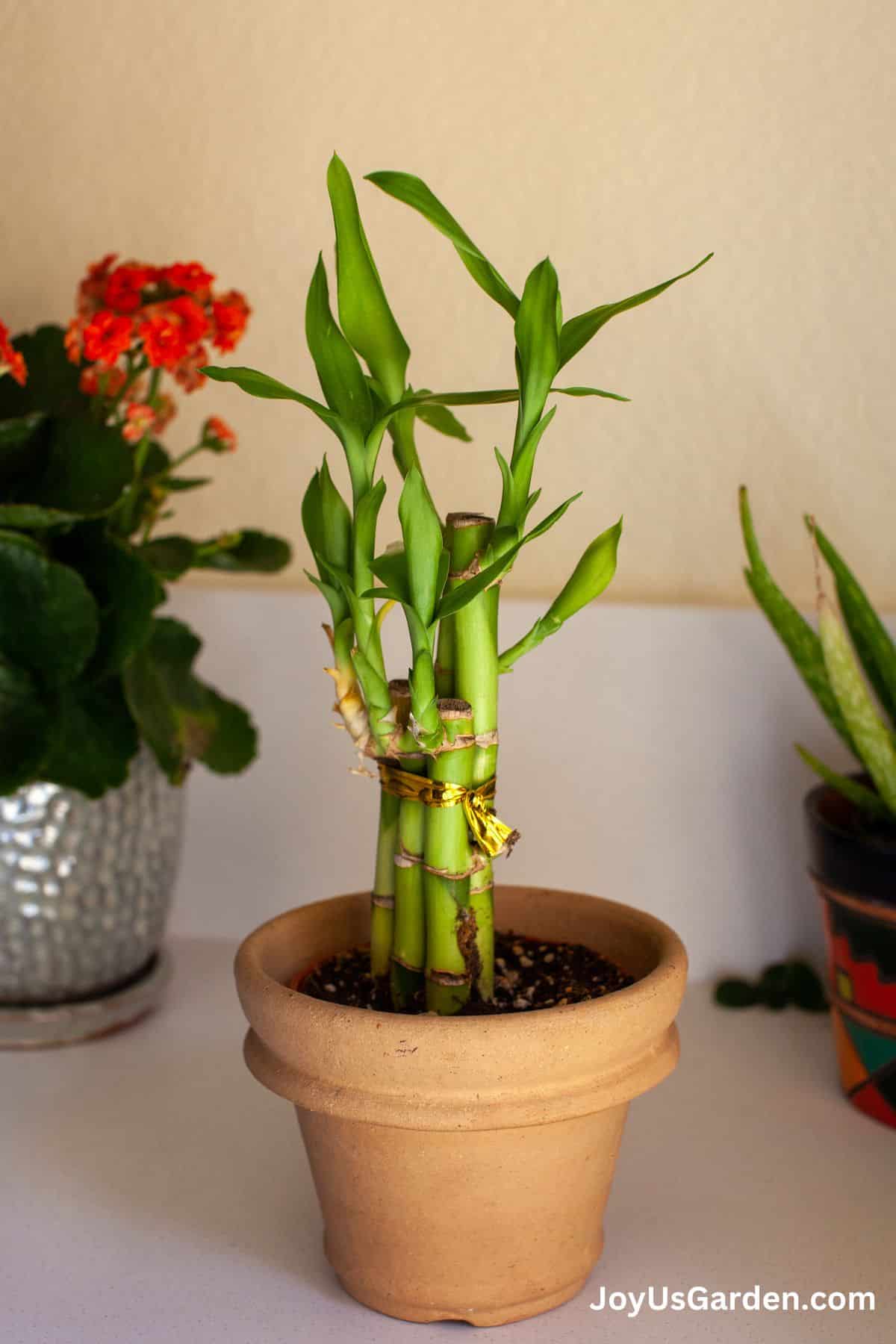
When to Repot
During the growing season; spring and summer are the best times. Early fall is fine if you’re in a temperate climate. Repotting during winter isn’t the optimum time, but if you have to, no worries.
I repotted mine because some roots were coming out of the drain holes, and I wanted to put it in a better soil mix.
Pot Size
This plant isn’t a true bamboo, so you don’t have to worry about it getting 30′ tall. Their root system isn’t too extensive, but it’ll need a bigger pot as it grows taller.
Choose a pot that is at least 2 inches wider and deeper than the current pot. This will give your plant enough room to grow and prevent it from becoming root-bound. Mine was in a 4″ pot; I would have put it into a 6″ pot if I wasn’t dividing it.
Speaking of size, the tallest I’ve seen a Lucky Bamboo growing indoors is 4′.
Types of Pots for Lucky Bamboo
You can use a variety of pots for these popular houseplants, including ceramic, plastic, clay, or glass pots. I put mine in a plastic grow pot to nestle inside a decorative pot.
Whatever type of pot you use, make sure there are drainage holes on the bottom of the container to allow excess water to drain out. Too much water building up in the bottom of the pot will lead to root rot.
Soil Mix for Lucky Bamboo
Lucky Bamboo is a type of dracaena and is typically found growing in tropical rainforests. It does best in well-draining soil. Combine potting soil with appropriate drainage materials to create a suitable mix for this plant.
I used 1/2 potting soil and 1/2 succulent and cactus mix. The potting soils I prefer are Happy Frog and Ocean Forest, both from Foxfarm. I like them because of their high-quality materials.
My blend: half Happy Frog and half DIY succulent and cactus mix with a handful of worm compost/ compost blend (for more nourishment) thrown in that I buy at our farmers market in Tucson.
Are you curious about growing Lucky Bamboo in water? Here are 26 things good to know.
Dividing My Lucky Bamboo
My Lucky Bamboo was in a 4″ pot, and I was going to repot it into a 6″ pot. This led me to do a little research.
I investigated the Feng Shui principles related to my four bamboo stalks. I knew that the number of stalks symbolized a particular meaning, but I was unsure about four. Well, having four stalks is considered unlucky in Chinese culture.
To prevent any negative energy, I separated my four stalks into two different plants. Two stems symbolize love, so why not bring on the positive energy?
Dividing this little plant was easy to do. I was able to pull the stalks and root ball apart with my hands (no knife needed!) – you can see the process in the video below starting around the 3-minute 33-second mark.
By the way, the roots of a Lucky Bamboo plant are orange/red, so don’t think there’s something wrong with yours!
How To Repot Lucky Bamboo Video Guide
Step-By-Step Guide to Repotting Lucky Bamboo
- Water the plant 3-5 days before repotting. You don’t want the soil to be dry nor to be drenched.
- Add the mix into your new container to bring the root ball to the desired height. You can measure the root ball and put in the necessary amount. You want the top of it to sit just below the top of the pot.
- Carefully remove the plant from its current pot. I usually push on the sides of the container to do this.
- Gently loosen the roots to separate them from one another if needed. Inspect the roots for any signs of rot or damage. If you find any, trim them off with clean scissors or shears.
- Place the plant in its new pot and fill around the sides with the potting mix and a handful of worm compost/compost, covering all the roots.
- Press the soil gently to secure the plant in place. It will sink down a hair, so you can add more mix if needed. Top with a thin (1/4″) layer of the compost blend.
- Water your newly repotted Lucky Bamboo thoroughly and let any excess water drain out from the bottom of the pot.
Care After Repotting
After repotting, I took the plants to the sink and watered them thoroughly.
I put my plant back in the spot where it was growing. It’s on the kitchen counter next to a south-facing window where it receives bright, indirect light all day. I gave the other plant to Masami, who was filming the video – it went to a good home!
I was watering this plant about every five to seven days in summer. It’s still in a small pot, but I think with it being divided and the fresh new mix, I can get away with watering every seven to ten days in the summer.
Lucky Bamboo roots are sensitive to minerals found in some tap water. If that is the case with your home, use distilled water or filtered water. I have a tankless r/o water filtration system in the kitchen with a cartridge that puts the good minerals back in. It’s what I use to water all my houseplants.
Are you looking for Lucky Bamboo care tips? I’ve done a detailed post on Growing Lucky Bamboo which you’ll find helpful.
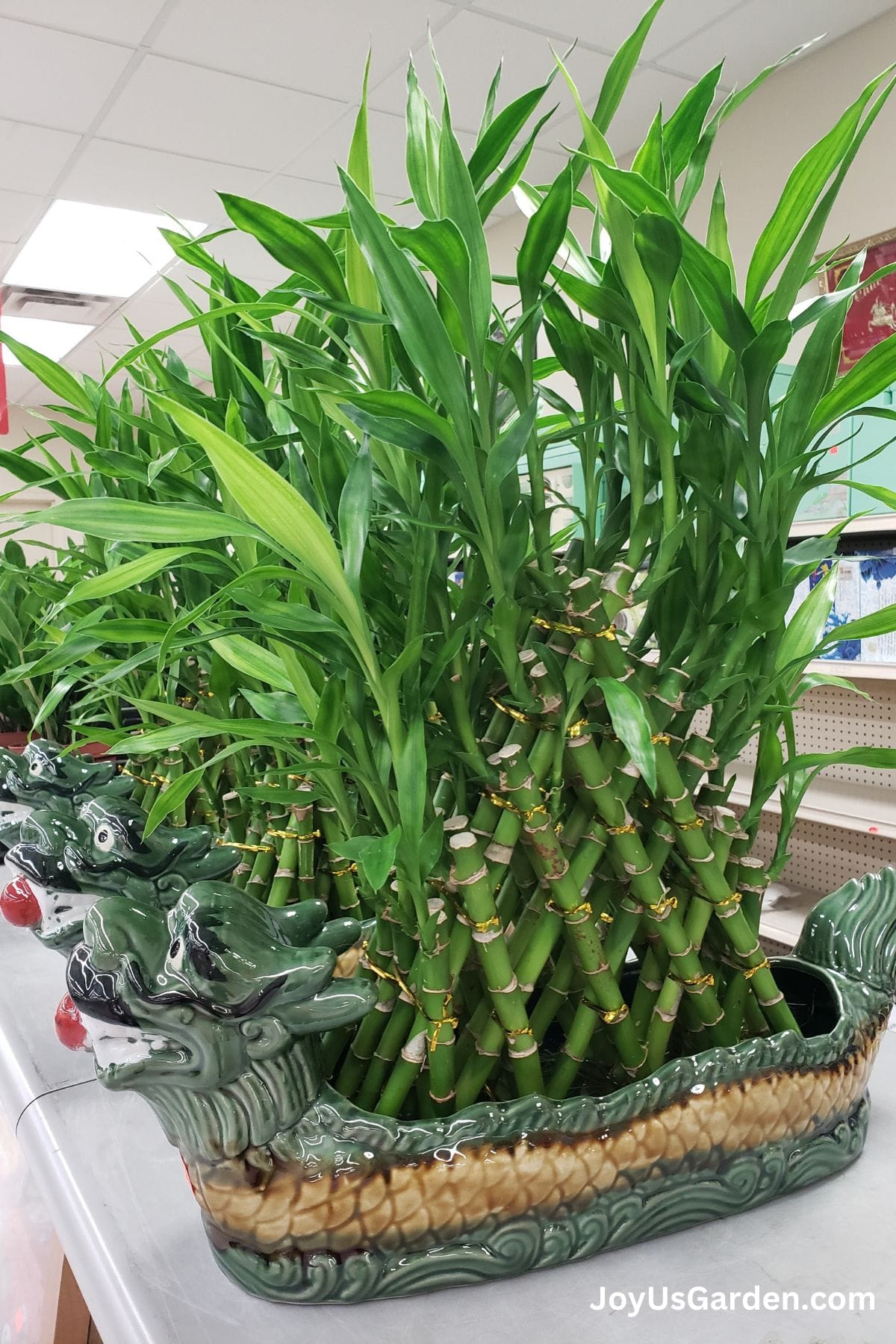
Repotting Lucky Bamboo FAQs
Yes, it’s important to water your Lucky Bamboo after repotting. This helps to settle the soil and hydrate the plant’s roots. Repotting can be stressful, so you want to water your plant a few days before the process begins as well as after.
Lucky Bamboo doesn’t need to be repotted often. You want to repot it when the roots are outgrowing its current pot or if it needs fresh soil. Typically, anywhere from every 3-6 years.
Either. I’ve seen it growing in water, in soil, and in ceramic and glass containers with river rocks.
For best results, the potting mix needs to have good drainage, aeration, and nutrients.
Some Of Our General Houseplant Guides For Your Reference: Guide To Watering Indoor Plants, Beginner’s Guide To Repotting Plants, How to Clean Houseplants, Winter Houseplant Care Guide, Plant Humidity: How I Increase Humidity For Houseplants, Buying Houseplants: 14 Tips For Indoor Gardening Newbies
Conclusion
This is a great plant for beginner plant parents. Repotting Lucky Bamboo may seem like a chore, but with some basic knowledge and a gentle touch, it’s very easy. Remember to use the right pot size and soil mix for your plant, and to water it after repotting. Here’s to happy and healthy Lucky Bamboo plants!
Happy Gardening,

This post may contain affiliate links, you can read our policies here.
- About the Author
- Latest Posts
Nell, the founder of Joy Us garden, was born into a gardening family and grew up in Connecticut’s countryside. After living in Boston, New York, San Francisco, & Santa Barbara, she now calls the Arizona desert home. She studied horticulture & garden design, working in the field all her life. Nell is a gardener, designer, blogger, Youtube creator, & author. She’s been gardening for a very long time & wants to share what she’s learned with you.
